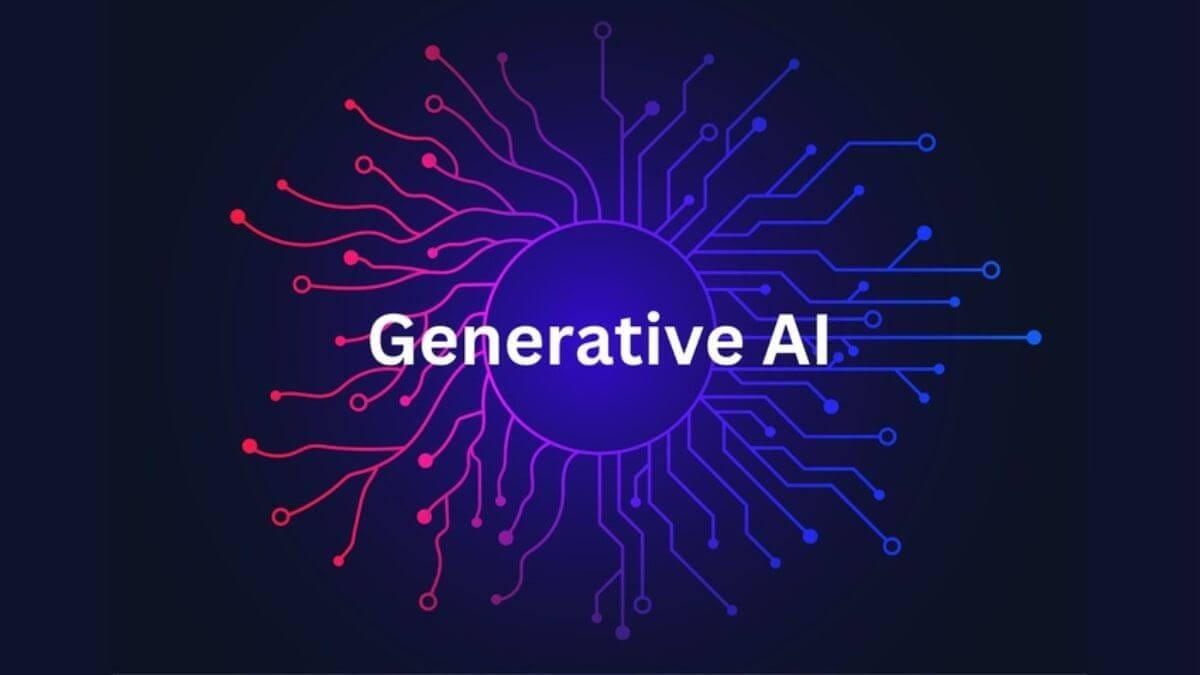Many exciting developments are changing the field of Generative AI Tools and creating opportunities for future creativity. Are you looking for the best generative AI tools to make a significant impact? Let’s look at the special qualities and benefits of the top seven generative ai tools list and see how they can inspire your imagination!
What is Generative AI?
Generative AI is an interesting field that deals with the development of models and algorithms that can generate unique and imaginative content. Generative AI Tools can produce new examples that resemble the original data using statistical techniques, and they often show creative abilities beyond their original purpose.
This technology encourages creativity and opens up new opportunities for industry-wide innovation.
How Do Generative AI Tools Work?
Advanced machine learning methods like variational autoencoders (VAEs) and generative adversarial networks (GANs), especially deep learning models, are used by Generative AI Tools. They learn to recognize patterns in the input and generate new content that is similar to the original data during training.
This makes it possible for them to apply what they have learned to produce unique and realistic results.
List of Generative ai Tools
Here’s an overview of the key features, pros and cons, functionality of the top seven Generative AI tools:
1. ChatGPT
ChatGPT is one of the most widely used Generative AI Tools from OpenAI. It offers free access to basic AI content creation and a premium subscription option called ChatGPT Plus, which provides users with extra processing power and early access to new features.
Key Features:
- Understands Natural Language
- Maintains Conversational Context
- Engages in Open-Domain Conversations
- Fluent in Multiple Languages
- Answers Questions Accurately
- Supports Creative Writing
- Language Translation
- Text Completion and Suggestions
- Personalized User Interactions
Pros:
- Delivers more natural conversations and accurate responses
- Available for free to the general public
Cons:
- Can make mistakes and be misused
- Cannot access information or current events after September 2021
2. GitHub Copilot
GitHub Copilot is a powerful code completion tool developed by collaborating with GitHub and OpenAI. It makes code writing more efficient for programmers.
Key Features:
- Smart Code Suggestions
- Supports Multiple Programming Languages
- Learns from Open Source Code
- Autocompletes Documentation and Comments
- Integrates with Various Development Environments (IDEs)
- Facilitates Quick Prototyping and Exploration
- Provides Context-Aware Suggestions
- Enables Collaborative Coding
- Customizable and Adaptable
- Continuously Learns and Improves
Pros:
- Boosts productivity and efficiency for developers
- Works with a variety of programming languages
Cons:
- Code quality and security may vary
- Risk of becoming too dependent on autocomplete features.
3. Gemini (previously called Bard)
Google’s Gemini, previously called Bard, is next on our list of top Generative AI Tools. This tool is a chatbot and content generator created by Google. It uses LaMDA, a transformer-based model, as Google’s answer to ChatGPT. Currently, it is in the experimental phase and is available to a limited group of users in the US and UK.
Key Features:
- Built on the LaMDA transformer-based model
- Available to a small group of users in the US and UK through a waitlist
- Includes a rating system for user feedback
- Accessible via individual Google accounts
- Can assist with software development and programming tasks
Pros:
- Emphasizes ethical and transparent AI development
- Thoroughly tested by numerous users before release
Cons:
- Lacks conversation history features like those in ChatGPT
- Access may be limited for Google account holders
4. Claude
Next on our list of top Generative AI Tools is Claude, an advanced AI assistant created by Anthropic. This tool aims to build AI systems that are helpful, fair, and safe, and it does a great job of following these goals.
Key Features:
- Handles large volumes of text
- Engages in natural conversations
- Supports multiple common languages and programming languages
- Automates workflows efficiently
Pros:
- Encourages higher user engagement and feedback
- Provides detailed and easy-to-understand responses
Cons:
- It can be challenging to use
- May give incorrect answers to factual questions
5. Synthesia
Following Claude is Synthesia, an excellent AI video platform designed to create videos effortlessly. It can quickly produce and broadcast professional-quality videos with minimal effort.
Key Features:
- Content Management Capabilities
- Personalized Onboarding Experience
- Text Analysis Tools
- Single Sign-On Functionality
- Scalable for Enterprises
- Text Editing Features
- Compliant with SOC 2 and GDPR standards
Pros:
- Offers high-quality avatars with a range of facial and vocal expressions
- Can generate lifelike videos efficiently
Cons:
- Limited customization options and fewer advanced features
- Restricted range of gestures for AI avatars
6. Jasper
Jasper is an AI content generation tool specializing in creating marketing copy, blog posts, social media content, and more. It’s designed to assist marketers, entrepreneurs, and content creators in generating high-quality written material quickly.
Key Features:
- Templates for Various Content Types
- AI-Powered SEO Recommendations
- Collaboration Tools for Teams
- Supports Multiple Languages
- Integration with Various Platforms
Pros:
- Fast content generation saves time
- Provides a range of templates to satisfy various needs.
Cons:
- Costs associated with subscriptions can add up for heavy use.
- It may require editing for tone and style.
7. DALL-E 2
DALL-E 2, created by OpenAI, is a powerful image-generation tool that can create pictures from written descriptions. It uses deep learning to produce high-quality images that match the provided prompts.
Key Features:
- Creates one-of-a-kind images from detailed descriptions.
- It lets you edit current images using special tools.
- Can understand complicated and abstract ideas.
- Makes high-quality images with lots of detail.
Pros:
- Highly creative outputs based on user prompts
- Can generate variations of images quickly
Cons:
- Requires precise prompts for the best results
- Can produce unexpected outcomes without clear direction
Wrap Up
As we move toward 2025, the world of Generative AI Tools is evolving rapidly, providing innovative solutions for various industries. Powerful language models like GPT-4 and ChatGPT, along with specialized tools like GitHub Copilot, Jasper, and Synthesia, boost creativity, increase productivity, and transform technology usage but its always better to aware yourself from advantages and disadvantages of artificial intelligence
By understanding these tools’ unique features, benefits, and potential downsides, businesses, and individuals can make informed choices that will drive future creativity and innovation. These tools will surely be crucial in determining how technology and creativity develop in the future as they continue to advance.
FAQs
What is the new generative AI technology?
Generative AI technology involves algorithms that create new content, such as text, images, and music, by learning from existing data, enabling innovative applications across various fields.
Is ChatGPT a Generative AI Tool?
ChatGPT is a Generative AI Tool designed to produce human-like text based on prompts, facilitating conversations, content creation, and various applications in natural language processing.
Which industries can gain from Generative AI Tools?
Industries like healthcare, entertainment, finance, marketing, and education can benefit from Generative AI Tools through improved creativity, personalized experiences, improved efficiency, and data-driven decision-making.
What are generative AI examples?
Examples of generative AI are ChatGPT for writing text, DALL-E 2 for making images, Jasper for creating marketing content, and GitHub Copilot for helping with coding. Each tool boosts creativity and productivity.


